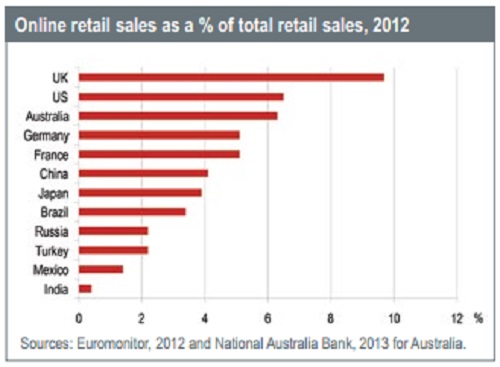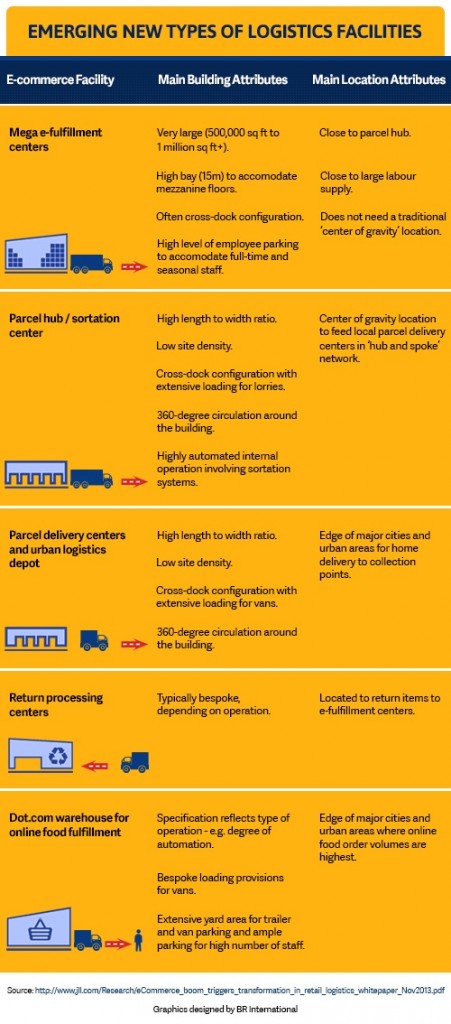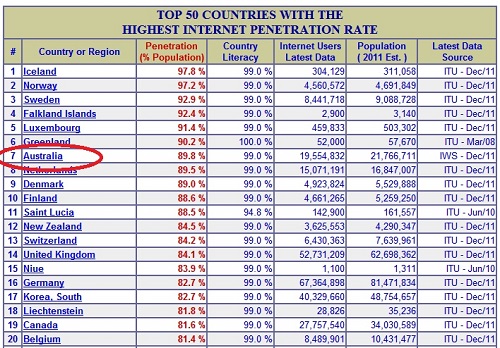How is e-commerce transforming retail logistics
27/8/2014
Jone Lang Lasalle (JLL) released in its first white paper on global e-commerce and retail logistics the following e-commerce statistics:
- US$1 trillion of sales in 2012 (eMarketer)
- US$579.9 billion global online retail sales in 2012 (Euromonitor)

What is the implications of these data to the future of retail logistics? How can BRi assist supply chain owners like you in better managing your retail stocks? Read on to learn more.
Evolution of retail logistics
The worldwide web and mobile broadband has given so much buying power to consumers. Almost everything can be bought with a click of the mouse or a tap on your mobile screen. Rather than picking up your purchased items at the store, you are more than welcome to have it delivered straight to your home, office or your friend’s house.
This has transformed shopping into a very pleasant experience and unless you make your customers feel this way, you are in deep trouble. Let’s see and discover how much the retail logistics industry has changed over the decades and how you should adapt to these changes.
From multi-channel to omni-channel logistic model
Emerging new types of logistics facilities
The shift from multi-channel to omni-channel has prompted the emergence of new types of logistics facilities such as:
- Mega e-fulfillment centers are gigantic logistics warehousing represented by tens of millions of square feet of warehouse storage now being built in China. These warehouses were first seen in Tier cities of China such as Beijing, Shanghai and Guangzhou.
- Parcel hubs are smaller yet automated warehouses featuring extensive loading bays for trucks. It is the ideal location for sorting and labeling products.
- Parcel delivery centers are characterised by long and low-level buildings. It has extensive loading for vans and is located on the edge of major cities and urban areas for easier, faster and more convenient home delivery or deliver to collection points.
- Returns processing centers are strategically situated within city centers for easy receipt of return items from customers.
- Dot.com warehouses are specialised warehouses for the online food fulfillment industry. It is built in city centers where online food order volumes are in demand.

Remain competitive. Adapt to the growing changes transforming the retail industry. Call us at 1300 348 828.
Go to our Warehouse and Distribution page to learn more about the warehousing and distribution solution we offer to industries.
Major factors contributing to
e-commerce transformation
Technology plays a significant role to the fast evolving e-commerce industry. The following data shows just how much its contribution are.
High rates of internet and mobile broadband usage
The International Telecommunications Union (ITU) reveals that the internet penetration averages around 77% in developed nations and 31% in developing countries. Further, it estimates that 2.7 billion people or around 39% of the world’s population will be using the internet by the end of 2013.
“ICT Facts and Figures report predicts that there will soon be as many mobile-cellular subscriptions as people inhabiting the planet, with the figure set to nudge past the seven billion mark early in 2014.” – ITU
Low fixed and mobile broadband costs
ITU shares that mobile broadband rates cost around or under 2% of monthly incomes in Europe but remains expensive in developing countries. But these rates have significantly dropped by 82% if it is to be measured in terms of share of GNI per capita.
Improved regulatory infrastructure supporting online purchasing
Both the government and private sectors have taken the initiative to strengthen online payment security. Visa alone has taken this move to ensure its customers will not fall prey to
online fraud:
“Visa already offers 100 percent purchase protection across all of its credit, debit and prepaid cards issued in Australia under its Zero Liability policy. Under this policy, Visa cardholders are not held liable for unauthorized transactions whether they are conducted online, in person or over the phone.”
High digital buyer penetration rate
Frost & Sullivan reveals the tremendous influence of mobile users to the rising
e-commerce trend:
“In 2013, purchases via mobile devices, ie., smartphones and tablets grew by 30%, accounting for $4.9 billion or 27% of all online shopping purchases. Online spending on tablets increased from 5% in 2011 to 8% in 2012 and 10% in 2013. Purchases via mobile devices are predicted to grow strongly in 2014, growing by 27% and predicted to reach $14.1 by 2017, growing at a CAGR of 30% over the next four years.”
Technology is shaping the world we live in. Choose an innovative solution to better your competitors. Talk to us at 1300 348 828 and we’ll design the best process that will maximise your profit and increase your global reach.
Australia joins the e-commerce trend
We see a boost in the economy of nations embracing the e-commerce trend. Is it the same
for Australia?
Laura Close of Business Australia Review shares this report:
“This year, Asia Pacific will actually surpass North America to become the world’s largest market for business-to-consumer e-commerce sales, with sales of nearly $1.5 trillion (eMarketer). Australians in particular have embraced online shopping, spending more than $14 billion online in 2013 – a surge of more than 9% from $12.8 billion in the previous year.”
This statement is supported by this table from Internet World Stats.

Ranked no. 7, Australia is undeniably joining the e-commerce trend. But are you prepared to compete given the following challenges the industry faces today? But are you prepared to compete given the following challenges the industry faces today?
The challenges faced by the e-commerce industry today
New customer demands have brought forth additional challenges to the e-commerce industry extending the problem to include:
The ‘click and collect’ market trend
Econsultancy ran a survey last year and had these results:
- 79% of consumers have used click and collect in the past year
Almost two-thirds of consumers (63%) have bought products online before collecting them in-store at least once in the past 12 months, while 16% use reserve-and-collect at least once a month - Just over one-fifth (22%) of respondents said they had never used reserve-and-collect.
- 50% of respondents had abandoned a purchase online due to unsatisfactory delivery options
Why the shift to click and collect?
The click and collect market trend beats the traditional pick-up-in-store system as it allows customers to:
- Check the availability of the product
- Reserve it
- Pick it up in store or in another convenient location
This is a more convenient shopping option because it gives the customers full control of the items they purchase. It has become so popular, not only in Australia but elsewhere around the globe, industry experts believe it will soon account to half of the many retailer’s online revenue. However, a key factor to ensure success in the click and collect market trend is satisfactory delivery options.
What is it’s impact to supply chain logistics management?
With more products bought online and expected to be picked-up-in-store, the demand for a more efficient logistics solutions become inevitable. You’ll need more than a logistics provider to assist you with these customer demands.
Here at BRi, we offer a one stop solution for your logistics needs. Call us at 1300 348 828 to learn more about the direct to store solution we deliver.
Cross border e-commerce
One of the major factors affecting e-commerce is cross border trade due to the following:
- Different languages
- Diversity in culture
- VAT fees
- Banking rules
- National regulations and legislation
- International rules and policies
You’ll need a reliable customs broker knowledgeable with globalization and expansion of international trade to avoid penalties for non-compliance to customs rules and regulations. Our customs clearance experts are always ready to assist you. Talk to us at 1300 348 828.
Visit our customs clearance and brokerage page to learn more about our services.
BRi responds to e-commerce industry demand with direct to store solution
“Logistics companies must move now with an immediate focus on press and go solutions whether it be into or out of Australia. With constant pressures being applied to the wholesale supply chain we must continue to drive costs downwards while decreasing delivery time to market.
“We can see consumers wanting their order on or soon after payment so let’s start listening and find a way through.
“Talk to us at 1300 348 828 and learn how our direct to store solution can help reduce your freight landed cost by up to 30% and 5 day reduced lead times.”
Resources:
http://www.jll.com/Research/eCommerce_boom_triggers_transformation_in_retail_logistics_whitepaper_Nov2013.pdf
http://www.moneycontrol.com/news/real-estate/e-commerce-boom-triggers-transformationretail-logistics_994585.html
http://www.franchise-plus.com/Article.aspx?Id=41
http://www.cbre.com.cn/EN/aboutus/mediacentre/mediaarchives/Pages/CBRE-Releases-Report%EF%BC%9Athe-Next-Frontier–the-Transforming-China-Logistics-Market.aspx
http://www.digitalstrategyconsulting.com/intelligence/2014/01/ecommerce_trends_in_the_uk_91bn_spent_online_in_2013.php
https://econsultancy.com/blog/63815-15-stats-that-show-why-click-and-collect-is-so-important-for-retailers
http://www.businessreviewaustralia.com/business_leaders/click-collect-saviour-of-retail
http://www.paymentsnews.com/2008/12/visa-to-strengt.html
http://www.itu.int/net/pressoffice/press_releases/2013/05.aspx#.U79-iJSSwhY
http://austlogistics.com.au/wp-content/uploads/2013/11/ALC-Press-Release-Changes-to-Infrastructure-Australia-Needed-to-Improve-Freight-Efficiency-20-November-2013.pdf
Back to News Page








